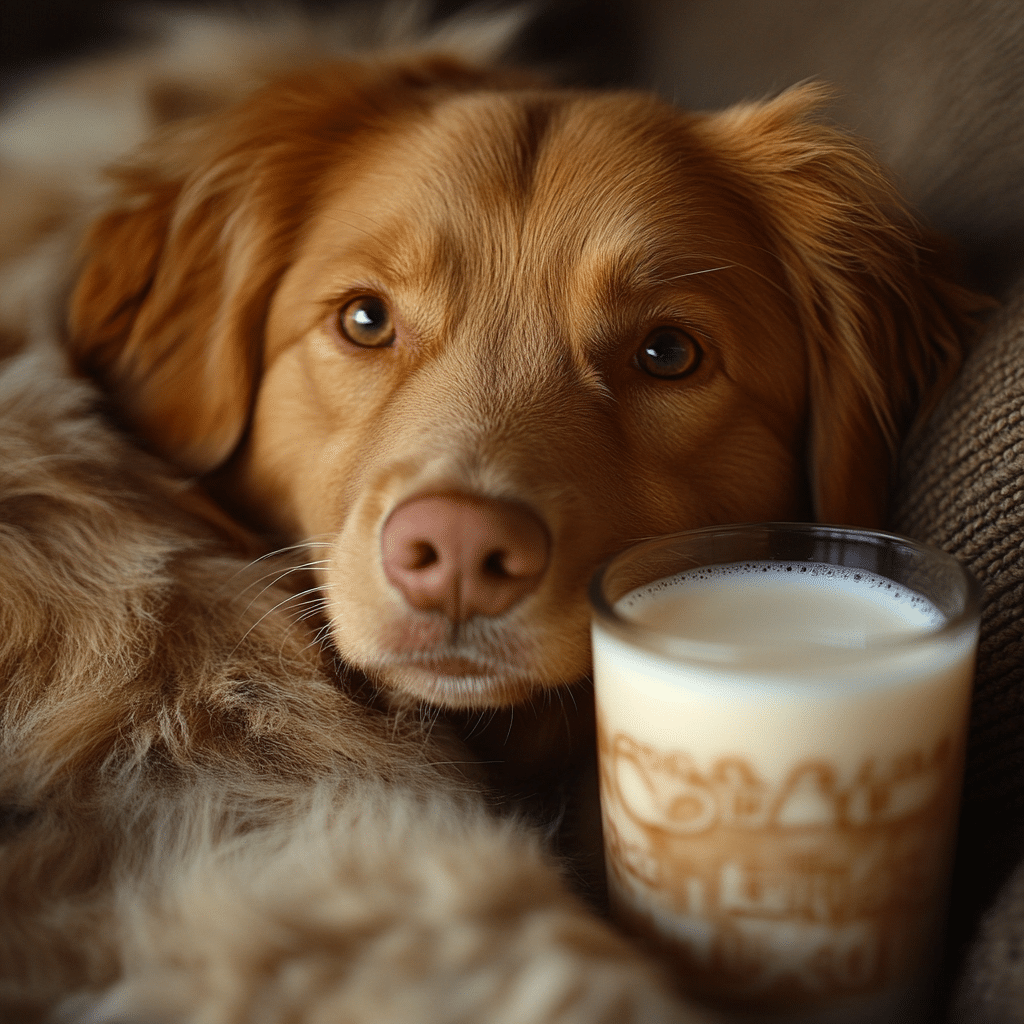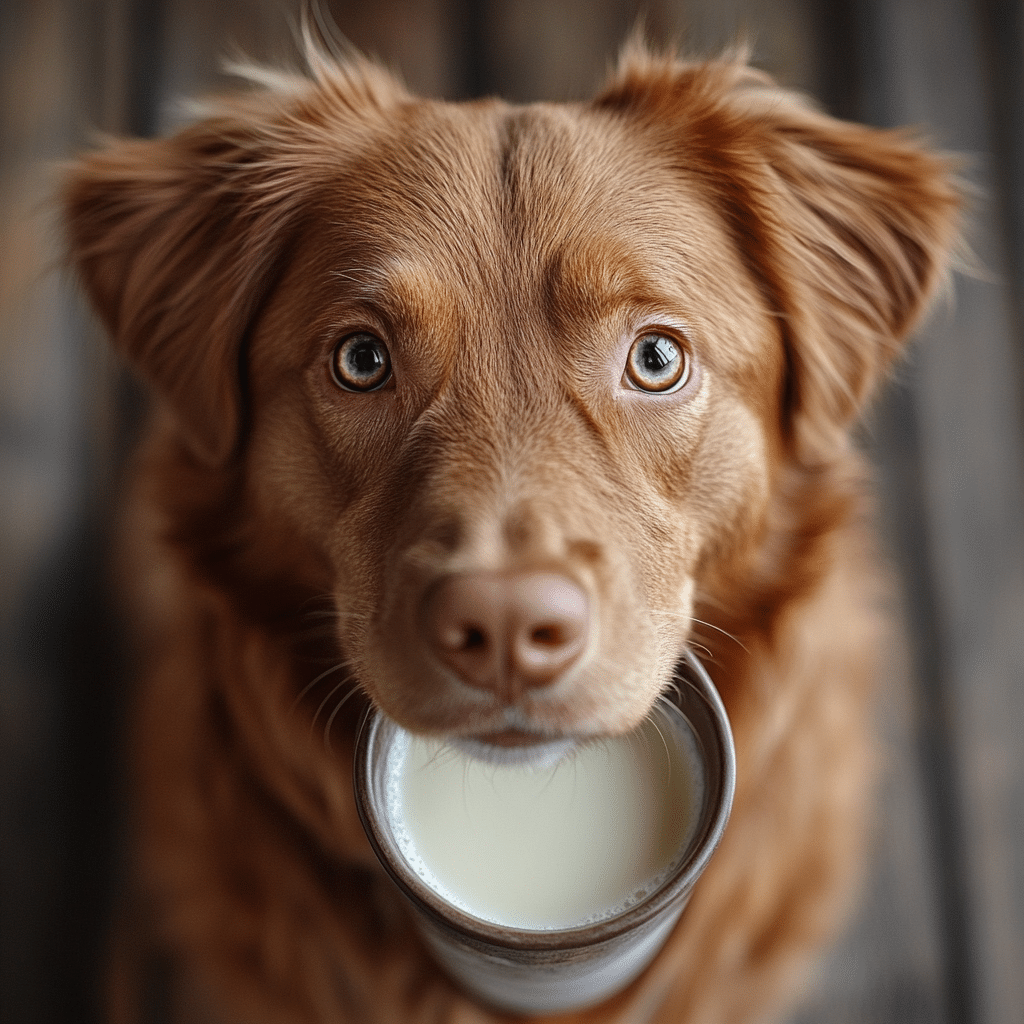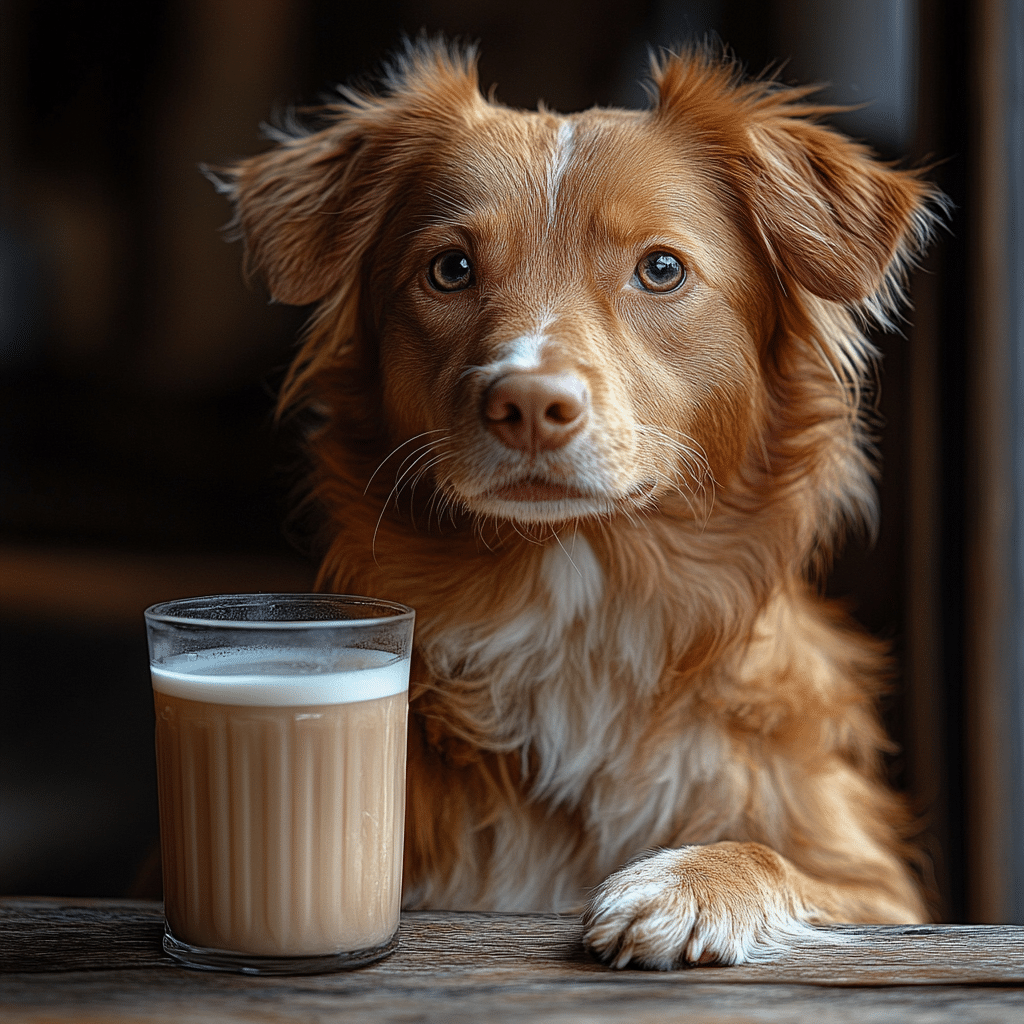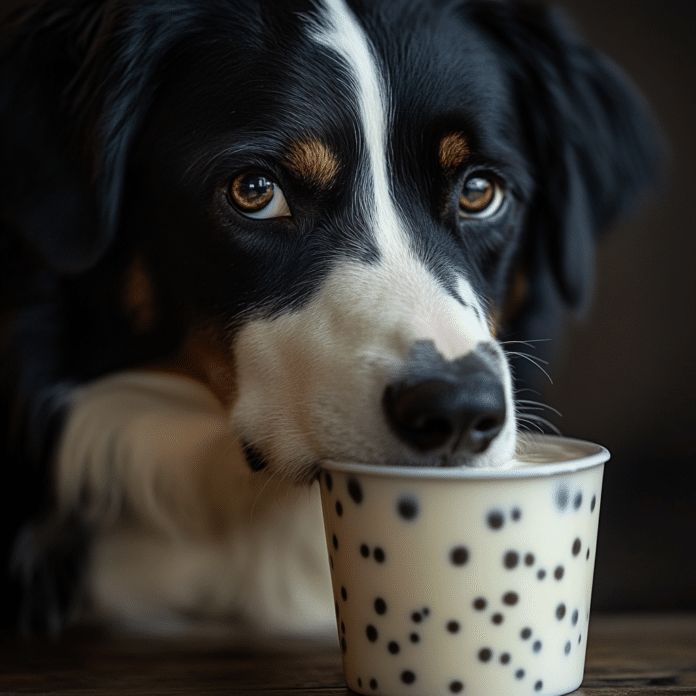For many pet owners, the question of can dogs drink milk? often pops up, especially when they see their furry friend eyeing their glass. Milk has been a staple in human diets and is often entertained as a delightful treat for pets. However, it’s critical to get the facts straight. Dogs process dairy differently than we do. Most adult dogs suffer from lactose intolerance, which means they lack lactase, the enzyme necessary to digest lactose, the sugar found in milk. This shortfall can lead to quite a few gastrointestinal woes, such as diarrhea and an upset tummy.
Understanding how our canine companions handle dairy is the first step to determining whether that splash of milk should be a part of their diet. Just because dogs may be curious about a tasty treat doesn’t mean it’s the right option for them. In many cases, what we consider a treat might turn out to be less enjoyable for our four-legged pals. Therefore, let’s take a closer look at the implications of introducing milk into your dog’s diet—safely and enjoyably.

1. Understanding Dairy and Lactose in Dogs
Most adult dogs are lactose intolerant, which can pose a challenge if you’re thinking about sharing your love for milk with them. The signs that a dog is struggling with lactose usually surface quite quickly. It starts with discomfort, leading to more embarrassing issues such as gas, bloating, or, dare we say, sloppy accidents. Owners should proceed with caution; just because one dog can guzzle a small bowl of milk doesn’t mean all dogs can handle it.
For those dogs who can tolerate milk, it might even provide some nutritional perks. Milk can be a good source of calcium, vitamins A and D, which contribute to bone health and overall well-being. However, these benefits have to be weighed against the risks, particularly for lactose-intolerant pups. So, what can responsible pet owners do?

2. Top 5 Considerations Before Giving Milk to Dogs
1. Lactose Tolerance
Before you hand over that glass of milk, it’s essential to assess your dog’s unique tolerance. Start small; a teaspoon of low-fat milk might be just fine, but don’t pour a full bowl right away. Watch for any signs of digestive distress like excess flatulence or an off-color stool over the next 24 hours.
2. Benefits vs. Risks
Milk does come with nutritional benefits, such as calcium and vitamins that contribute to a dog’s health. However, these advantages might be overshadowed by digestive issues, especially if your dog is lactose intolerant. It’s best to weigh what’s best for them based on your dog’s unique health needs.
3. Alternatives to Cow’s Milk
If you find that your pooch is lactose intolerant, don’t fret; there are dog-specific milk alternatives available, like PetAg’s Esbilac. This milk substitute is designed to be digestible for your furry friend, allowing them to enjoy treat-like experiences without the problematic side effects.
4. Milk Quantity Matters
Think moderation! A few ounces of milk as a treat can be fun, but make it an occasional event rather than a daily affair. Overindulgence could lead to an upset stomach and other gastrointestinal troubles.
5. Consulting Your Vet
Finally, when in doubt, always consult your veterinarian. They’ll know the ins and outs of your dog’s diet and can offer insights tailored to their specific health needs and conditions.
3. Food Interactions: Can Dogs Have Milk with Other Products?
When considering if dogs can enjoy milk as a part of their diet, it’s crucial to understand how it interacts with other common foods. So can dogs eat pecans, garlic, or tomatoes along with their dairy treat? Let’s dig into it.
4. Can Cats Eat Blueberries? A Comparative Look
Shifting gears slightly, ever wondered if cats can enjoy some blueberries? Well, the answer is yes—cats can eat blueberries in moderation. Much like dogs and dairy, new food introductions require careful monitoring. Just like how we discussed the question, “can cats eat blueberries?”, the same applies across dietary changes for different pets.
5. Creative Ways to Serve Milk to Your Dog
If your dog has shown they tolerate milk pretty well, let’s get creative in how we serve it!
6. Monitoring Your Dog’s Reaction to Milk
Introducing milk into your dog’s diet is just the beginning. It’s also crucial to keep a close eye on their reactions following your treat experiment:
It’s worthwhile to track these reactions over time. This way, you and your vet can make informed decisions regarding your pet’s dietary plan.
A Thoughtful Approach to Canine Nutrition
In conclusion, whether dogs can drink milk safely boils down to the individual dog. Some might find it delightful, while others may feel less fortunate after indulging. Always prioritize your dog’s health by consulting a veterinarian, ensuring any dietary changes are safe and beneficial. Focusing on quality, moderation, and balance in all treats, including milk, can contribute to a happier, healthier dog.
Keeping an open line of communication with your vet regarding their reactions will help pave the way for a customized dietary approach that enhances their overall well-being. After all, a healthy dog is a happy dog!
Whether you’re just trying to understand if “can dogs drink milk” or seeking insights on other famous treats like can Dogs have Pickles ?, education is key. By staying informed, you enhance not just your pet’s life but your own and enjoy a well-rounded relationship with your furry friend.
Can Dogs Drink Milk Safely and Enjoyably for Their Health?
Is Milk a Treat or a Tummy Trouble?
So, can dogs drink milk? The answer isn’t as straightforward as you might think. While many dogs can enjoy a bit of cow’s milk without any issues, some may experience digestive troubles. It’s like how some folks love a good cheese platter while others steer clear due to lactose intolerance. A little bit of milk might be a special treat for some pooches, just as the dazzling march birthstone provides a personal touch for those born in March. It’s all about knowing how your dog reacts.
Interestingly, dog lovers sometimes forget that moderation matters. Just as enjoying a song from the popular Imagine Dragons songs can brighten your day, a small amount of milk can bring joy to your furry friend! However, excessive milk might lead to a tummy ache, so keep an eye out for any changes in behavior after your pup has had a little milk. After all, it’s essential to make sure our pets feel their best, just as someone would want to ensure their experience at Empire Visionworks is tip-top.
Fun Facts About Our Furry Friends and Dairy
Did you know that not every dog enjoys the same food? Just like with Hank Aaron and his impressive baseball career, personalities vary across the board! Most dogs will show excitement when dairy products are around, but it’s pivotal to understand each pet’s needs. And speaking of unique foods, did you know that the green onion, often a favorite in many cuisines, can actually be harmful to dogs? So, even though canines can sip some milk, it’s important to be cautious with other ingredients in your fridge, just like considering the lotus emira price when making a purchase!
Before pouring that milk into your dog’s bowl, remember this: while treating them to a splash may sound rewarding, it’s always best to think about their health first and foremost. Just like the Lincoln Lawyer, navigating tricky situations requires a careful strategy. If you’re ever uncertain, consulting your vet can really help clear the air. They’ll help you determine if milk is a fit for your furry family member—just as you’d trust a financial service like Millennium Trust with your savings. Ultimately, keeping those tails wagging and avoiding any gastrointestinal games is what it’s all about!




